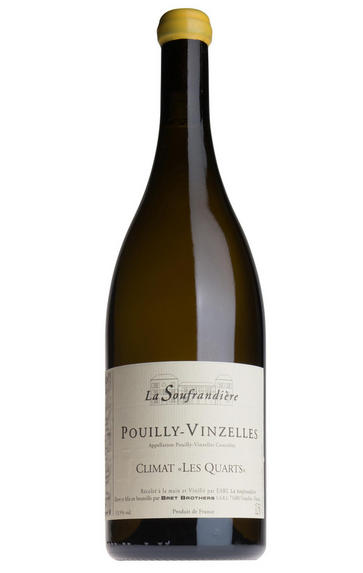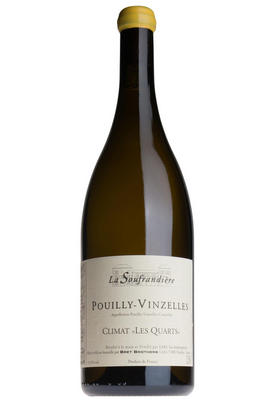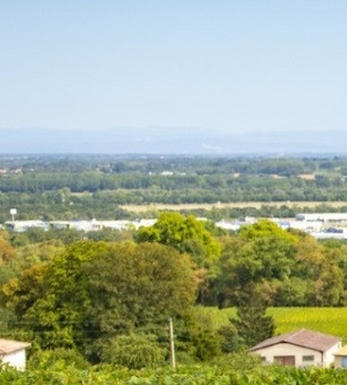
2019 Pouilly-Vinzelles, Climat Les Quarts, La Soufrandière, Bret Brothers, Burgundy

Critics reviews
Jasper Morris MW, insideburgundy.com (December 2020)
About this WINE

Bret Bros.
Grandfather Bret bought this property in Vinzelles in 1947. In 2000 Jean-Philippe and Jean-Guillaume Bret took their vineyards out of the local co-operative and established their Domaine de la Soufrandière (see here for the wine selection from la Soufrandière) with 4 hectares of vines entirely in the appellation of Pouilly Vinzelles. They have also developed a negociant activity using the name Bret Brothers.
Previous experience between them includes stages at Ridge and Newton in California and Comte Lafon in Burgundy. Most of their vines are in a perfectly situated east facing slope of Vinzelles called Les Quarts, on Bajocian limestone with a high silica/quartz content.
The vineyards have been farmed organically since 2000, with biodynamic principles being progressively introduced. The grapes, both their own and those purchased, are picked in small containers, then whole bunch pressed in the tinailler (local Maconnais and Beaujolais word for cuverie) before descending by gravity to the barrel cellar. They are currently all taken out of barrel for bottling after 11 months.

Pouilly-Vinzelles
Pouilly-Vinzelles is a small wine-producing appellation located in the Mâconnais region of Burgundy. It lies just south of the famous Côte d'Or region, and is characterised by limestone-rich soils, which contribute to the minerality and complexity of the wines. The region also benefits from a continental climate, with warm summers and cool autumns, ideal for ripening Chardonnay grapes.
Chardonnay is the dominant grape variety in Pouilly-Vinzelles, accounting for all of the wines produced in the appellation. The wines are typically dry, full-bodied, and elegant, with notes of citrus, stone fruits, and sometimes a hint of hazelnut. They are known for their freshness and balance, with good acidity and a lingering finish.
Like other appellations in Burgundy, Pouilly-Vinzelles has strict regulations governing grape growing and winemaking. These regulations dictate factors such as grape varieties allowed, vineyard practices, and ageing requirements, all aimed at ensuring the quality and authenticity of the wines.

Chardonnay
Chardonnay is often seen as the king of white wine grapes and one of the most widely planted in the world It is suited to a wide variety of soils, though it excels in soils with a high limestone content as found in Champagne, Chablis, and the Côte D`Or.
Burgundy is Chardonnay's spiritual home and the best White Burgundies are dry, rich, honeyed wines with marvellous poise, elegance and balance. They are unquestionably the finest dry white wines in the world. Chardonnay plays a crucial role in the Champagne blend, providing structure and finesse, and is the sole grape in Blanc de Blancs.
It is quantitatively important in California and Australia, is widely planted in Chile and South Africa, and is the second most widely planted grape in New Zealand. In warm climates Chardonnay has a tendency to develop very high sugar levels during the final stages of ripening and this can occur at the expense of acidity. Late picking is a common problem and can result in blowsy and flabby wines that lack structure and definition.
Recently in the New World, we have seen a move towards more elegant, better- balanced and less oak-driven Chardonnays, and this is to be welcomed.


Buying options
Add to wishlist
Description
From the eponymous vineyard – which is next to the winery – this is, in a sense, the brothers’ signature cuvée. There are sunny notes of peach and hot stones on the nose, making the wine’s mouth-watering acidity all the more thrilling. Deep-rooted, 80-year-old vines are key to its success. Drink 2020-2027.
wine at a glance
Delivery and quality guarantee